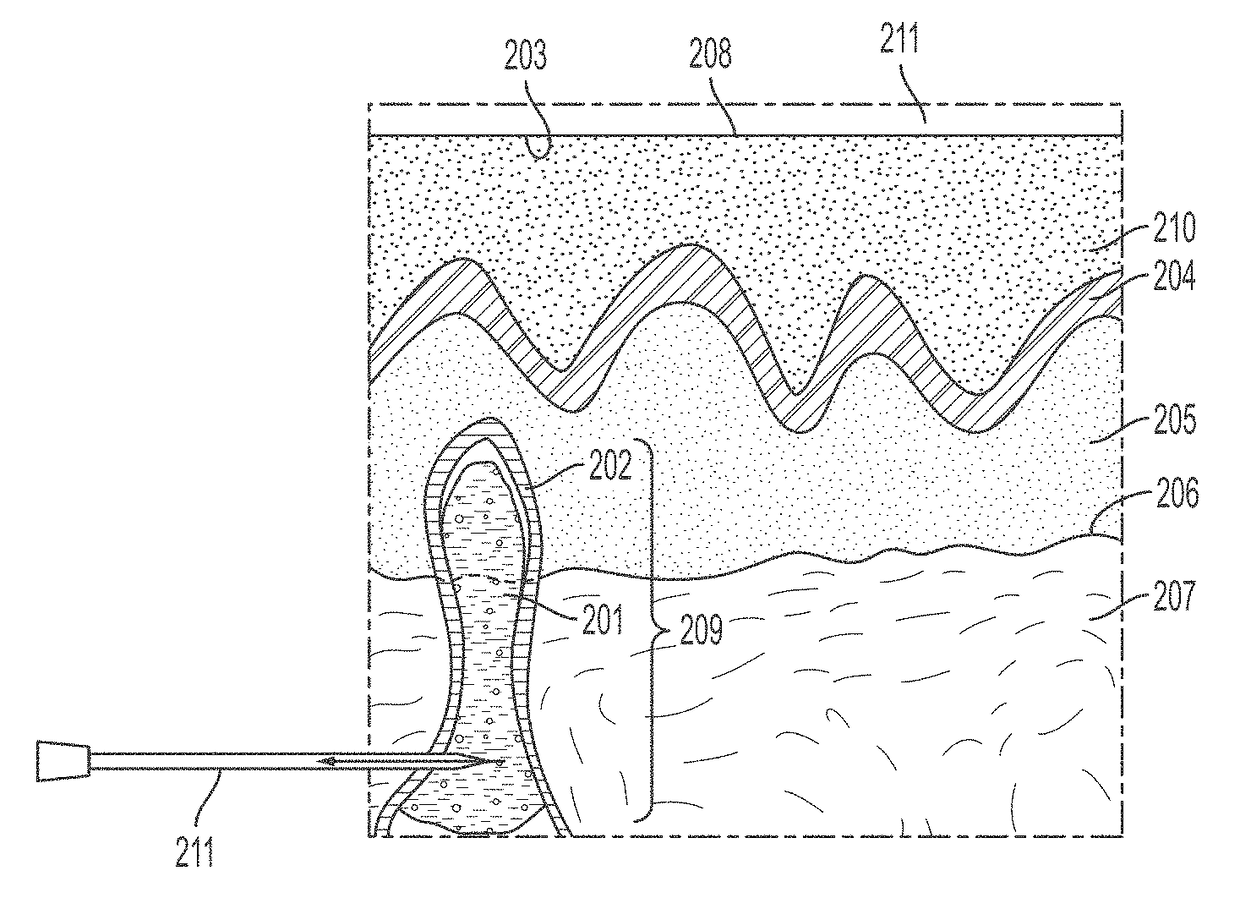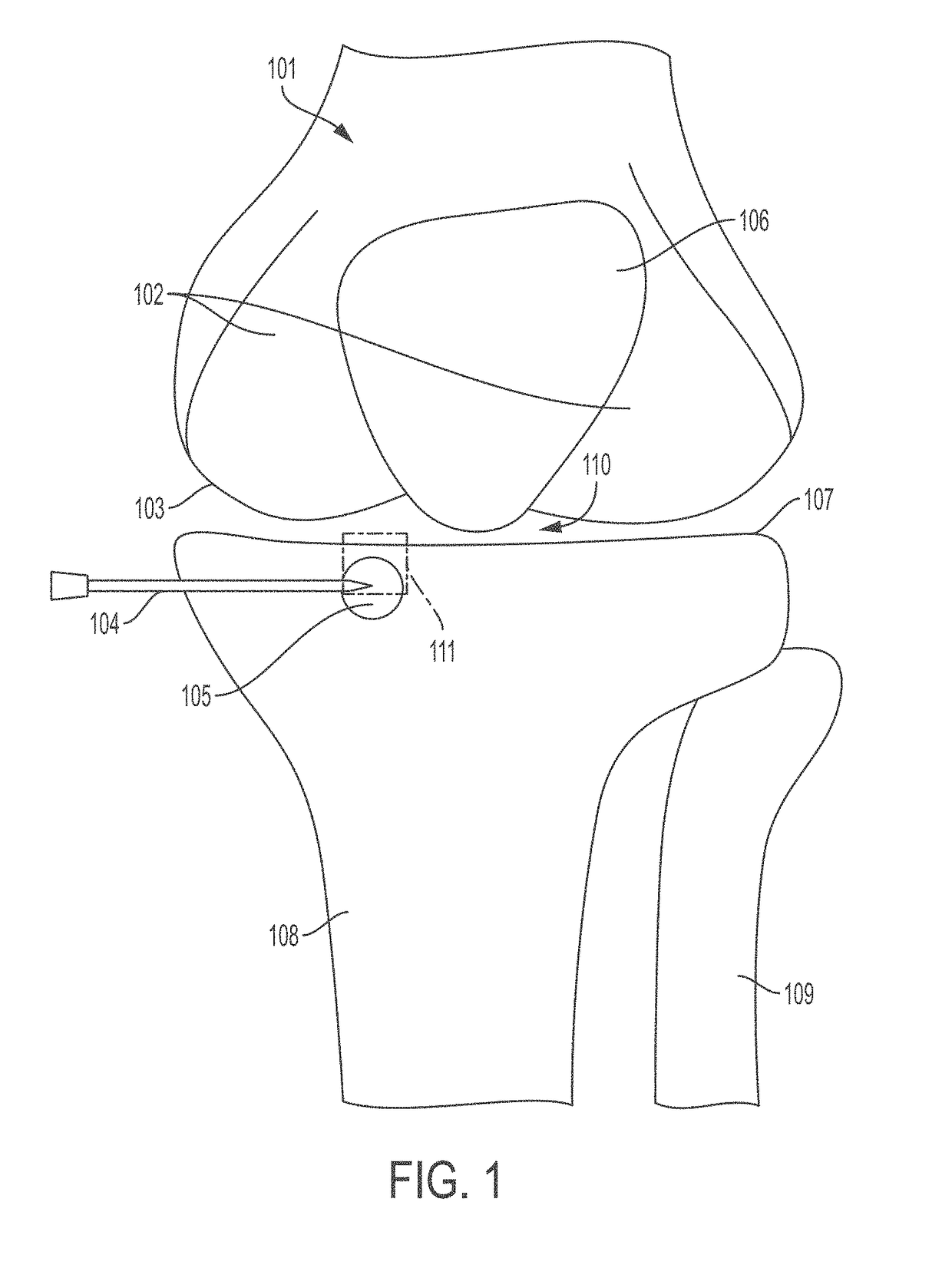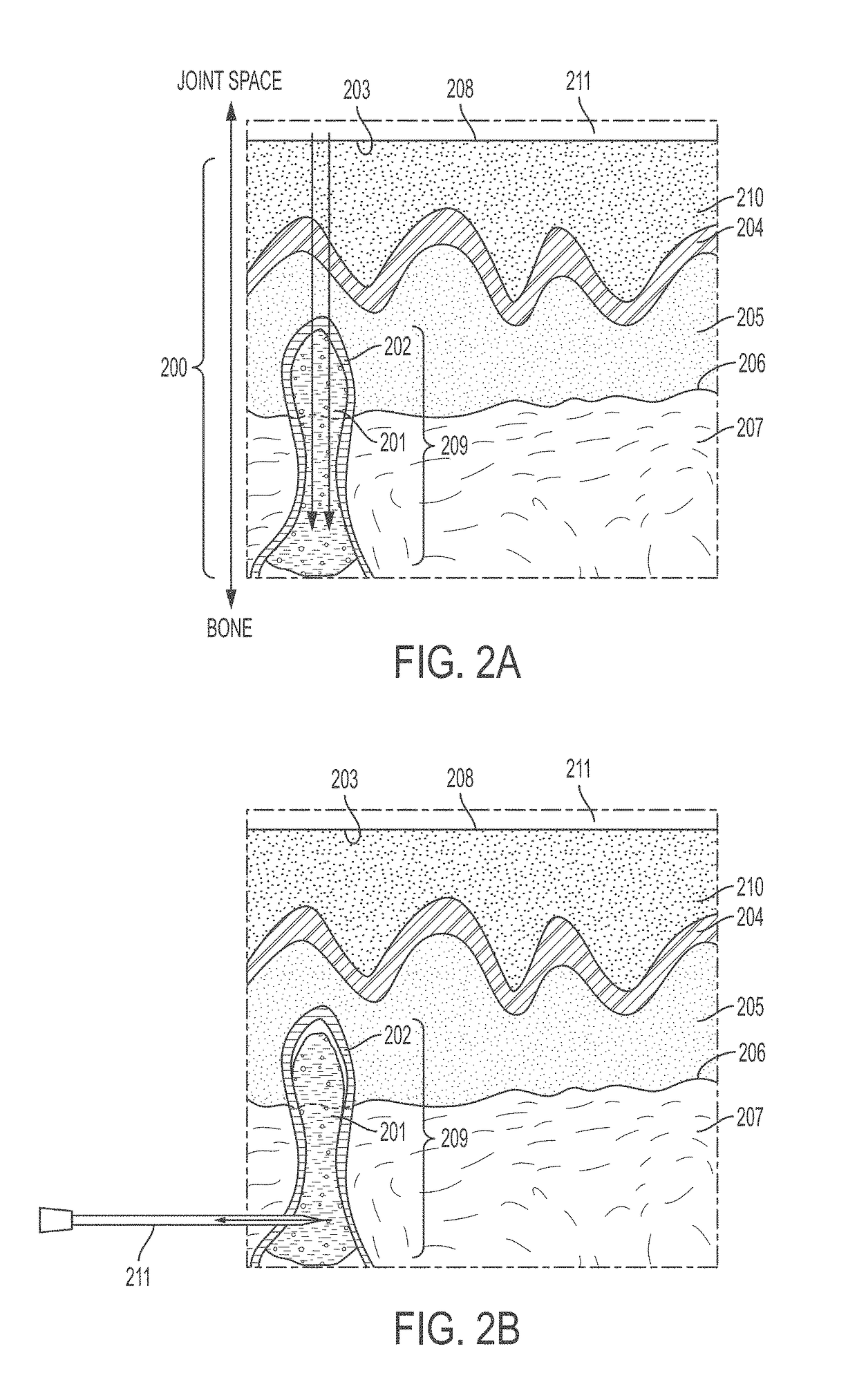Methods and Compositions For The Treatment of Degenerate Bone
a technology of degenerate bone and composition, applied in the field of methods and compositions for the treatment of degenerate bone, can solve the problems of patients' host problems, significant pain and loss of function, and loss of productivity, and achieve the effects of reducing joint pain, reducing pain in the joint, and slowing the progression of osteoarthritis
- Summary
- Abstract
- Description
- Claims
- Application Information
AI Technical Summary
Benefits of technology
Problems solved by technology
Method used
Image
Examples
example 1
of a Patient in Need of Treatment
[0218]Described herein is an exemplary diagnosis of a patient in need of treatment for bone disease according to the present disclosure.
[0219]A patient presents with pain in a joint, for example a knee joint. Pain and activity are evaluated using a clinical score such as KOOS, IKDC, and / or Tegner Lysholm Activity Scale, which reveals increased pain and decreased function relative to an unaffected joint. See, e.g., Collins, N. J. et al. Arthritis Care Res. (Hoboken) 2011, 63(011), S208-228, the contents of which are incorporated herein by reference in their entirety. Conventional radiography does not reveal an obvious cause thereof. Accordingly, the patient undergoes T2 Mill to identify an area of bone degeneration, visible as an intense white area in the MM output.
example 2
Treating a Patient
[0220]Described herein is an exemplary method of treatment for bone disease in a patient in need thereof according to the present disclosure.
[0221]The surgical area is draped and cleaned using standard surgical protocols. The leg of the patient is abducted and a mini-fluoroscopy unit is placed so that appropriate anteroposterior and lateral views of the knee can be obtained. The appropriate starting site is identified based on the location of the affected area of bone. Cannula trajectory is determined and an incision is made in the skin of the patient at a location that allows for access to the affected area of bone.
[0222]A trocar of a bone marrow aspiration needle is used to access an area adjacent to the affected area and the tip of the bone marrow aspiration needle is inserted and punched through the remaining cortex and into or adjacent the affected area of bone. Optionally, fluoroscopy is present in the operating room to allow for verification of instrument lo...
example 3
Solid Components
[0227]Described herein are exemplary solid components according to the present disclosure.
Solid Component 1
[0228]A 98.5 g batch of solid component was made as follows. Separate amounts of 83.0 g of alpha tricalcium phosphate (“α-TCP,” Ca3(PO4)2), 14.5 g calcium carbonate (CaCO3), and 1.00 g calcium phosphate monobasic monohydrate (“monocalcium phosphate monohydrate,” Ca(H2PO4)2H2O) were weighed out as powders and separately dried at a temperature of at least 165° C. overnight, for at least 12 hours. The dried powders were then combined in a jar and mixed by hand shaking for 10 minutes to produce a 98.5 g batch of Solid Component 1 containing 84.3% alpha tricalcium phosphate, 14.7% calcium carbonate, and 1.02% calcium phosphate monobasic monohydrate (mass / mass).
[0229]Aliquots of the resulting solid component were then dispensed into sterile syringes comprising integrated mixing devices (Medmix Systems AG, Rotkreuz, Switzerland). Into 3 mL sterile syringes were dispens...
PUM
| Property | Measurement | Unit |
|---|---|---|
| Molar density | aaaaa | aaaaa |
| Molar density | aaaaa | aaaaa |
| Molar density | aaaaa | aaaaa |
Abstract
Description
Claims
Application Information
 Login to View More
Login to View More - R&D
- Intellectual Property
- Life Sciences
- Materials
- Tech Scout
- Unparalleled Data Quality
- Higher Quality Content
- 60% Fewer Hallucinations
Browse by: Latest US Patents, China's latest patents, Technical Efficacy Thesaurus, Application Domain, Technology Topic, Popular Technical Reports.
© 2025 PatSnap. All rights reserved.Legal|Privacy policy|Modern Slavery Act Transparency Statement|Sitemap|About US| Contact US: help@patsnap.com



